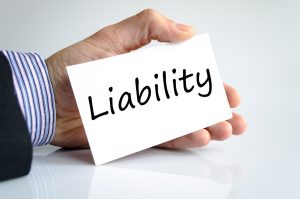How Do You Prove Liability?
 Michael Babboni
Personal Injury
Going to court for a lawsuit means that you and your accident lawyer are trying to prove that liability—or fault—rests with the person or company being sued. If you succeed in your lawsuit, it means that a judge or jury has agreed with your argument that your injury was the result of the someone else’s negligence, that is to say, dereliction of duty or responsibility, and thus, you are owed financial compensation by the negligent party.
Michael Babboni
Personal Injury
Going to court for a lawsuit means that you and your accident lawyer are trying to prove that liability—or fault—rests with the person or company being sued. If you succeed in your lawsuit, it means that a judge or jury has agreed with your argument that your injury was the result of the someone else’s negligence, that is to say, dereliction of duty or responsibility, and thus, you are owed financial compensation by the negligent party.So how does liability get assigned? What does it take to convince a judge or jury that you are right? We’re going to go into some of the factors that can help to prove liability.
Evidence Is Everything
The biggest factor for proving liability is the existence of evidence. Evidence is usually physical factors surrounding the incident that can be analyzed or examined to verify claims that are made. In some cases, the evidence may be so strong and unquestionable that a liable party will opt to settle out of court because it’s a foregone conclusion that fault will be assigned due to the strength of the evidence. Some of the most compelling types of evidence are:
Photographic Evidence
In today’s courts, this is nearly indisputable, especially if it is video evidence. For example, some more prudent Florida drivers now have “dashboard cameras” installed on their cars. “Dash cams” are small video cameras, constantly recording all activity from the point of view of the driver. If a driver gets into a collision that results in an injury and makes a claim that the other driver swerved into them without doing a proper safety check, the dash cam can quickly confirm or deny this.
Forensic Evidence
While not as immediately accessible as a video recording of an event, forensic evidence doesn’t lie. As another example, a child enters a home where an aggressive dog is not kept out in the yard but is kept in the home. The child is attacked and bitten by the dog, but while people hear the dog growling, even barking, and then hear the child screaming, no one sees the actual attack.
Later, however, the evidence is clear. A homeowner can claim that the dog was kept in its cage the entire time, but if the child shows bite marks that match the dog’s mouth, the evidence speaks for itself. Moreover, if the homeowner changes the story to claim the child went into the caged area with the dog, a quick dusting of fingerprints on the closed gate to match the child’s fingerprints with that of the gate would reveal whether the child opened the gate or not.
Eyewitness Testimony
While not quite as rock-solid as it once was, due to the proliferation of cameras on phones, witness testimony is still an important part of proving liability. When someone leans against a railing on the second floor of a shopping mall, and that railing breaks under weight, causing a fall, multiple witnesses attesting to the victim doing nothing but leaning on the railing can turn the tide of a case in court.
